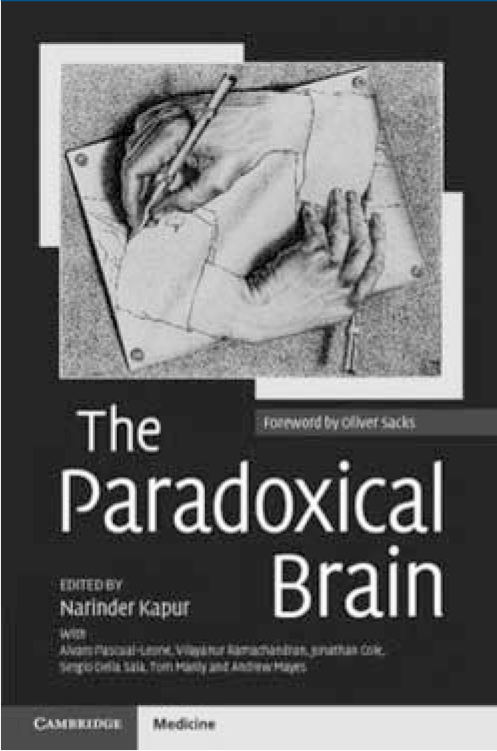
The ancient Greek term paradoxon is composed of the prefix ‘para’ (against) and the word ‘doxa’ (opinion) and literally means ‘beside belief’ or ‘contrary to expectation’. Explaining what we currently know about brain function by means of paradoxes – brain findings that are counterintuitive and go against the grain of established neuroscientific thinking – can appear a paradoxical exercise itself. However, this original, entertaining and informative approach has been successfully undertaken by Narinder Kapur and a panel of leading researchers in the fields of clinical and cognitive neuroscience.
Featuring a foreword by Oliver Sacks, this multi-authored volume covers a wide range of brain paradoxes across different disciplines. Clinical neuropharmacology informs clinical epileptologists about the paradoxical worsening of seizures by some anti-epileptic drugs (e.g. carbamazepine in absence seizures). One of the most controversial issues in neuroepidemiology is the paradoxical, yet consistent observation that an increased proportion of tobacco smokers in a population correlates with a lower risk of developing Parkinson's disease. An intriguing chapter on comparative cognition presents paradoxical experimental findings showing that chimpanzees can identify more digits than a human could ever do in a single glance, and remember their location (photographic memory). Throughout the book there are elegant examples illustrating how brain damage or sensory loss can result in better-than-normal performance. Specifically, the chapters on creativity and accomplishments in both neurological (e.g. epilepsies, neurodegenerative dementias) and psychiatric conditions (e.g. psychoses, affective disorders, autism) invite the reader to focus on the uniqueness of the individual patient and their positive potentials, rather than thinking solely in terms of the disorder.
Paradoxes about the brain are intellectually stimulating and have both negative and positive implications. A negative implication is that these findings inevitably remind us that our current understanding of brain function is limited and overall primitive, especially in comparison with what we know about other, less paradoxical organs. The positive aspect is that these paradoxes are enlightening examples of exceptions to, or anomalies in, our current theories on brain functioning in both healthy people and neurological patients, thus suggesting future avenues for neuroscientists to develop better theories. These theories will likely result from what Thomas Kuhn called ‘paradigm shift’ and will therefore be characterised by higher explanatory powers to improve our understanding of brain function in health and disease. Will our endless attempt to uncover the secrets of brain function and to develop theories that ‘carve nature at its joints’ leave us with fewer brain paradoxes? Maybe so, paradoxically.





eLetters
No eLetters have been published for this article.